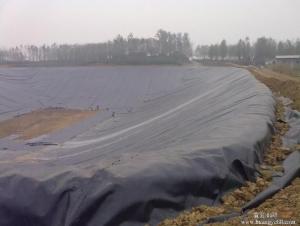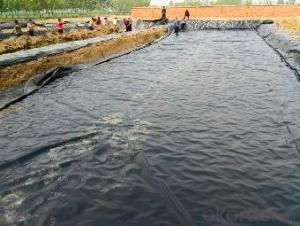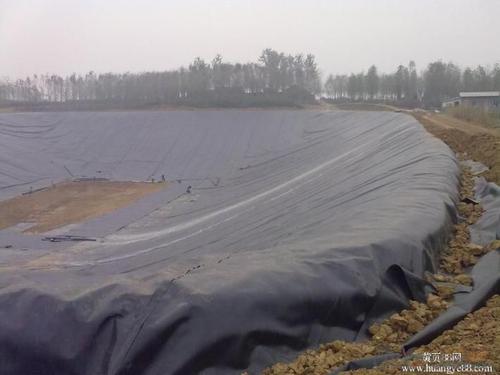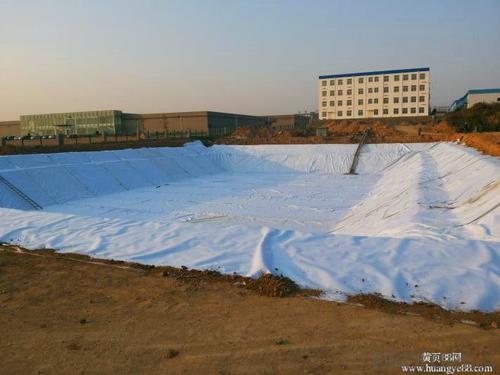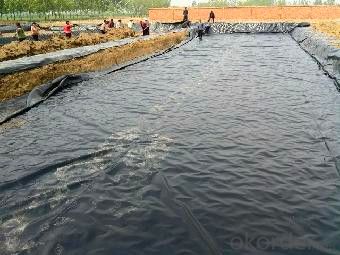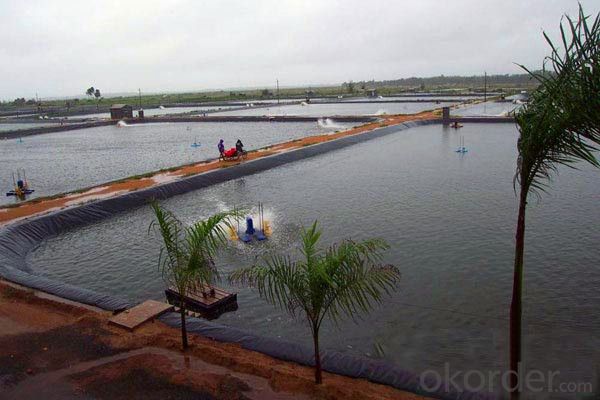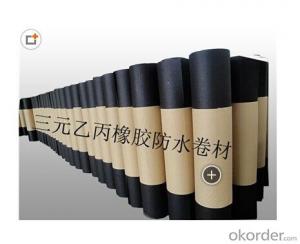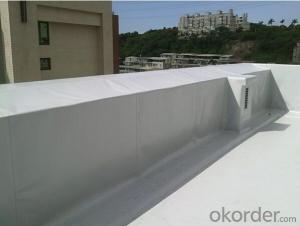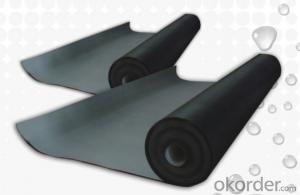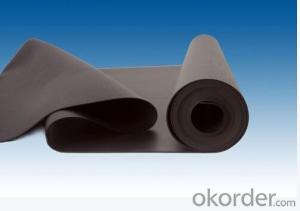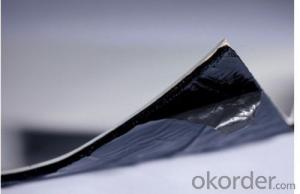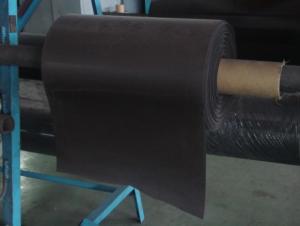EPDM Waterproof Membrane for Roofing Construction
- Loading Port:
- Qingdao
- Payment Terms:
- TT OR LC
- Min Order Qty:
- 10000 m²
- Supply Capability:
- 5000000 m²/month
OKorder Service Pledge
OKorder Financial Service
You Might Also Like
Description Of EPDM Waterproof Membrane:
1. Waterproofing layer is imperfect: It’s hard to completely avoid weak points or breakages, which makes waterproofing layer with deficiencies or hidden defects more or less.
2. The main structure is with defects: It’s hard to completely avoid construction joint, deformation joint and small fissures in structure.
3. If there are weak points or breakage, water gets in and fluid-channeling happens between the main structure and the waterproofing layer. In such cases, once the main structure is with defects, seepages would occur.
Main Features of EPDM Waterproof Membrane:
Different types or specifications of products should be separated, not mixed.
Keep it dry and ventilated, protected from the sun or rain.
Storage temperature should never be higher than 45 °C. Pile up the membranes flatwise whose stockpile height never exceeds five layers. One layer is guaranteed if it is placed vertically.
Prevent it from inclination or In the process of transportation, it should be lying in case of inclination or lateral pressure. If necessary, cover it with felt-cloth.
Storage time is at least one year from manufacture date on if the product is under normal operation of storage.
Specifications of EPDM Waterproof Membrane:
NO. | Reinforcement | PY | G | ||||||||
Type | I | II | I | II | |||||||
1 | Soluble Matters | 2mm | - | 1300g/m2 | |||||||
3mm | 2100g/m2 | ||||||||||
4mm | 2900g/m2 | ||||||||||
2 | Water tightness,30min,≥Mpa | 0.3 | 0.2 | 0.3 | |||||||
3 | Heat resistance degree,°C,no glide, no flow, no drop | 90 | 105 | 90 | 105 | ||||||
4 | Tension, N/50mm | Longitudinal | 450 | 800 | 350 | 500 | |||||
transverse | 250 | 300 | |||||||||
5 | Elongation at break,≥ | Longitudinal | 30% | 40% | - | ||||||
transverse | |||||||||||
6 | Brittleness point | -18°C | -25°C | -18°C | -25°C | ||||||
7 | Tearing strength,≥ | Longitudinal | 250N | 350N | 250N | 350N | |||||
transverse | 170N | 200N | |||||||||
8 | Manual work and climate quicken aging | Appearance | No.1 degree (no glide, no flow, no drop) | ||||||||
Longitudinal tensionkeeping rate,≥ | 80 | ||||||||||
Brittleness point | -10°C | -20°C | -10°C | -20°C | |||||||
GB18242-2000 | |||||||||||
Applications of EPDM Waterproof Membrane:
1.Roofs, Basement, Toilets
2. Industrial and civil building waterproofing
3. Geosynthetic liner for swimming pool, channels, irrigation system
4. Especially suitable for projects with high requirements in durability, anti-corrosion and deformation.
IMages of EPDM Rubber Waterproof Membrane:
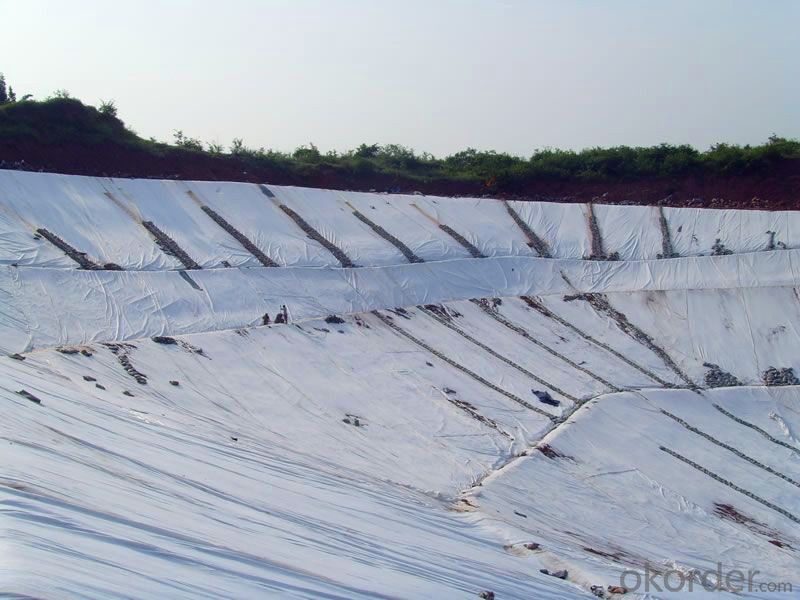
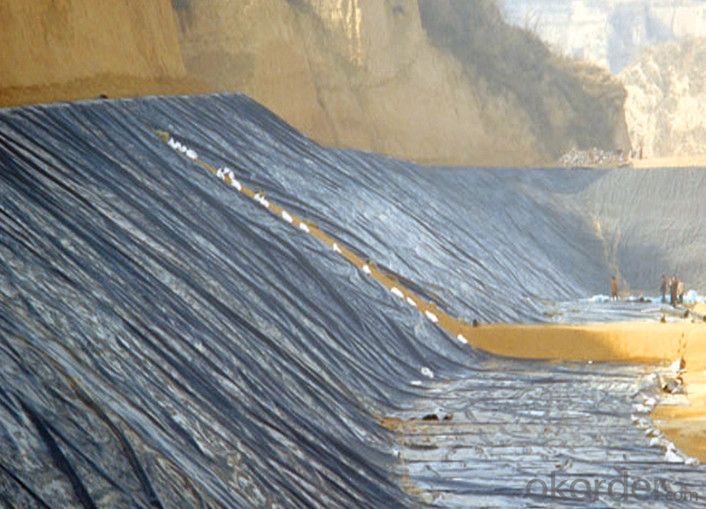

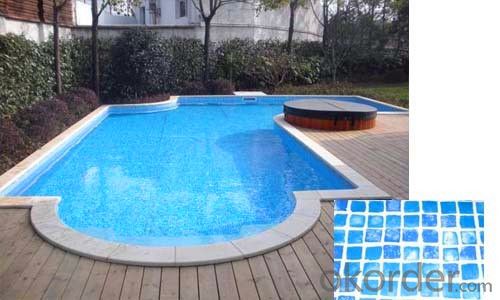
FAQ:
Q1.:What are we supplying?
A1:We are specialized in producing Colorful Asphalt Roof Shingle, SBS/APP modified bitumen waterproof membrane, Self adhesive bitumen waterproof membrane, PVC waterproofing membrane, EPDM rubber roofing membrane, Single Component Polyurethane Waterproof Coating, and Spray Polyurea Waterproof Coating
.
Q2: How Many years experience do we have?
A2:We have exported to more than 20 countries in the past 15 years.
Q3.:Do you provide samples for us?
A3:Yes,We will provide samples for free.Waiting for your your good news.
- Q: Can a waterproofing membrane be used on precast stone surfaces?
- Yes, a waterproofing membrane can be used on precast stone surfaces. The membrane acts as a protective barrier, preventing water from penetrating the stone and causing damage. It is commonly used in construction projects to ensure the longevity and durability of precast stone surfaces.
- Q: Can a waterproofing membrane protect against mold or mildew growth?
- A waterproofing membrane is capable of protecting against the growth of mold or mildew, as they thrive in environments that are damp and moist. The membrane acts as a barrier, preventing water from entering the building structure. This effectively keeps the area dry and greatly reduces the likelihood of mold or mildew growth. Furthermore, waterproofing membranes often contain anti-microbial properties that further hinder the growth of mold and mildew. Nevertheless, it is important to remember that while a waterproofing membrane can offer substantial protection against mold and mildew, it is not a foolproof solution. It is crucial to ensure proper ventilation and carry out regular maintenance to prevent these issues.
- Q: Can a waterproofing membrane be used on sloped roofs?
- Yes, a waterproofing membrane can be used on sloped roofs. In fact, it is often recommended to use a waterproofing membrane on sloped roofs to prevent water infiltration and potential leaks. The membrane acts as a barrier, preventing water from seeping into the roof structure and causing damage. Additionally, the membrane can also help to protect the roof from other elements such as UV rays, temperature fluctuations, and mechanical stresses. It is essential to choose a waterproofing membrane that is specifically designed for sloped roofs and is compatible with the roofing material to ensure long-lasting protection.
- Q: Can waterproofing membranes be used on utility vaults?
- Yes, waterproofing membranes can be used on utility vaults. Utility vaults are typically underground structures that house important utility equipment such as electrical transformers, water meters, or communication systems. These vaults are susceptible to water infiltration, which can cause damage to the equipment and compromise its functionality. Waterproofing membranes are a common solution to prevent water from entering utility vaults. These membranes are typically made of durable materials such as rubber, PVC, or modified bitumen, which provide an impermeable barrier against water. They are applied to the walls and floors of the vault, creating a watertight seal that prevents moisture from seeping in. By using waterproofing membranes on utility vaults, the risk of water damage is significantly reduced. This helps to ensure the functionality and longevity of the equipment housed inside. Additionally, waterproofing membranes can also provide protection against other potential issues such as leaks, corrosion, and chemical damage. However, it is important to note that the application of waterproofing membranes on utility vaults requires proper surface preparation and installation techniques to ensure a successful and long-lasting waterproofing system. Therefore, it is recommended to consult with a professional waterproofing contractor who has experience in working with utility vaults to ensure the best results.
- Q: Can a waterproofing membrane be used on tunnels with pedestrian traffic?
- Tunnels with pedestrian traffic can indeed utilize a waterproofing membrane. Such membranes are frequently employed in subterranean structures, such as tunnels, to avert water infiltration and safeguard the structure against water-related harm. Generally, these membranes are applied to the outer walls and floors of the tunnel, thereby forming a barrier against water penetration. They are engineered to endure the weight of traffic and provide long-lasting protection against moisture. Furthermore, certain waterproofing membranes possess anti-slip characteristics, ensuring the safety of pedestrians traversing the tunnel. All in all, employing a waterproofing membrane on tunnels with pedestrian traffic constitutes an effective approach to bolster the longevity and safety of the structure.
- Q: Can a waterproofing membrane be used for plant rooms?
- Indeed, plant rooms can benefit from the utilization of a waterproofing membrane. These rooms frequently accommodate machinery and equipment that necessitate safeguarding against water and moisture. Employing a waterproofing membrane can effectively avert water-related harm to both the plant room and its enclosed equipment. By establishing a protective barrier, the membrane effectively prohibits the infiltration of water into the walls, floors, and ceilings of the plant room. This becomes particularly crucial in regions prone to water leaks or condensation. Waterproofing membranes are meticulously engineered to endure diverse environmental circumstances, guaranteeing enduring protection for plant rooms.
- Q: Can a waterproofing membrane be used for data centers?
- Yes, a waterproofing membrane can be used for data centers. A waterproofing membrane is designed to prevent water infiltration, which is crucial for protecting sensitive equipment and critical data in a data center. Water damage can result in costly downtime and data loss, making it essential to have reliable waterproofing measures in place. By applying a waterproofing membrane to the walls, floors, and ceilings of a data center, it can create a barrier that prevents water leaks and moisture buildup. This helps to maintain a controlled and dry environment, ensuring the safety and functionality of the data center's infrastructure and equipment. Additionally, some waterproofing membranes also offer insulation properties, further enhancing the protection and energy efficiency of the data center.
- Q: Can a waterproofing membrane be used on tunnels with water drainage systems?
- Yes, a waterproofing membrane can be used on tunnels with water drainage systems. The membrane acts as a barrier, preventing water from penetrating the tunnel structure and directing it towards the drainage system for proper disposal. This helps to ensure the integrity and longevity of the tunnel while effectively managing water flow.
- Q: Can a waterproofing membrane be used for a shower enclosure?
- Indeed, it is possible to utilize a waterproofing membrane for the purpose of a shower enclosure. Waterproofing membranes possess the capability to impede the infiltration of water through various surfaces, consequently preventing any potential harm. Within a shower enclosure, where water exposure is exceedingly pronounced, application of a waterproofing membrane on both the walls and floor is highly advisable in order to establish a safeguarding barrier. This measure serves the purpose of guaranteeing that water does not permeate the encompassing structure, thereby averting predicaments such as mold proliferation, decay, and water-induced impairment. To attain optimal outcomes, it is crucial to opt for a waterproofing membrane specifically tailored for showers and adhere to the manufacturer's guidelines for accurate installation.
- Q: Can a waterproofing membrane be installed on wood surfaces?
- Yes, a waterproofing membrane can be installed on wood surfaces. Waterproofing membranes are commonly used on various surfaces including wood, concrete, and metal. When applied to wood surfaces, the membrane acts as a protective barrier, preventing water from seeping into the wood and causing damage such as rot, warping, or decay. It is important to choose a waterproofing membrane that is specifically designed for wood, as some products may not be suitable for this surface. Additionally, proper surface preparation and application techniques should be followed to ensure a strong and effective bond between the membrane and the wood surface.
Send your message to us
EPDM Waterproof Membrane for Roofing Construction
- Loading Port:
- Qingdao
- Payment Terms:
- TT OR LC
- Min Order Qty:
- 10000 m²
- Supply Capability:
- 5000000 m²/month
OKorder Service Pledge
OKorder Financial Service
Similar products
Hot products
Hot Searches
Related keywords
